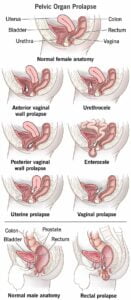Understanding Dry Macular Degeneration
Dry macular degeneration is a prevalent eye disorder that primarily affects individuals over the age of 50. It occurs due to the gradual breakdown of the inner layers of the macula, a critical part of the retina responsible for clear central vision. Let’s delve into the details:
Symptoms of Dry Macular Degeneration:
- Visual distortions, where straight lines may appear bent.
- Reduced central vision in one or both eyes.
- Increased need for brighter light during reading or close-up tasks.
- Difficulty adapting to low-light environments (e.g., dimly lit restaurants or theaters).
- Blurriness when reading printed words.
- Challenges in recognizing faces.
- Well-defined blurry spots or blind spots in the field of vision.
Eye Involvement:
- Dry macular degeneration can affect either one or both eyes.
- If only one eye is affected, compensatory mechanisms from the unaffected eye may mask noticeable changes.
- Importantly, it does not lead to total blindness because peripheral vision remains intact.
Types of Macular Degeneration:
- Dry macular degeneration is one of two forms of age-related macular degeneration.
- It progresses slowly over years and primarily affects the macula’s tissue.
- The wet type, characterized by abnormal blood vessel growth and leakage under the retina, can cause sudden and severe vision loss.
When to Seek Medical Attention:
- If you experience distortion, blind spots, or difficulty seeing fine details, consult an eye doctor.
- Early detection is crucial, especially if you’re over 60 years old.
Potential Causes and Risk Factors:
- The exact cause of dry macular degeneration remains uncertain.
- Research suggests a combination of genetic factors and environmental influences (such as smoking, obesity, and diet).
- The condition develops gradually as the eye ages, affecting the macula’s cell function.
Risk Factors:
- Age: Most common in individuals over 60.
- Family history and genetics play a role.
- Race: More prevalent in white populations.
- Smoking and exposure to tobacco smoke increase the risk.
- Obesity may worsen early or intermediate macular degeneration.
Complications:
- Central vision loss due to advanced dry macular degeneration can lead to depression and social isolation.
- Some individuals experience visual hallucinations (Charles Bonnet syndrome).
- Dry macular degeneration may progress to the wet type, causing rapid vision loss if left untreated.
Remember, early detection and self-care measures can help delay vision loss associated with dry macular degeneration. Regular eye check-ups are essential for maintaining eye health. 🌟
Certainly! Here are some preventive measures to reduce the risk of developing dry macular degeneration:
Routine Eye Exams:
- Regular eye exams are essential for early detection of macular degeneration. Visit your eye doctor regularly to identify any signs or changes.
Manage Medical Conditions:
- If you have cardiovascular disease or high blood pressure, follow your healthcare provider’s instructions and take prescribed medications.
- Proper management of underlying health conditions can contribute to overall eye health.
Quit Smoking:
- Smokers are at a higher risk of developing macular degeneration. Seek help from your provider to quit smoking.
Maintain a Healthy Weight and Exercise:
- Regular physical activity and weight management play a crucial role in overall health.
- Aim for a balanced diet and engage in regular exercise to promote overall well-being.
Nutrition Matters:
- Consume a diet rich in fruits and vegetables.
- These foods provide antioxidant vitamins that can help reduce the risk of macular degeneration.
Include Fish and Omega-3 Fatty Acids:
- Omega-3 fatty acids, found in fish, may have protective effects against macular degeneration.
- Consider adding fish (such as salmon, mackerel, or sardines) to your diet.
- Walnuts are also a good source of omega-3 fatty acids.
Remember that proactive steps can contribute to maintaining healthy vision and minimizing the risk of dry macular degeneration. If you have any concerns, consult your healthcare provider or an eye specialist. 🌟
Feel free to ask if you need further information or have any other requests! 😊


